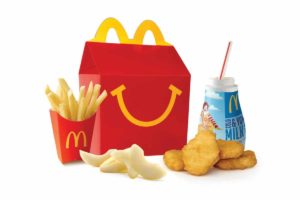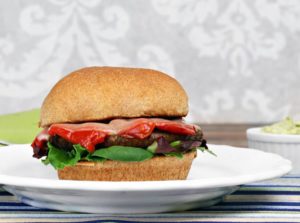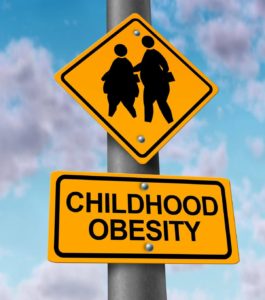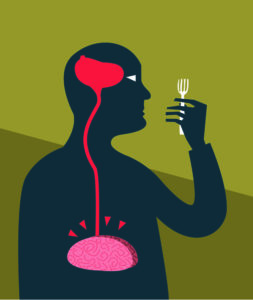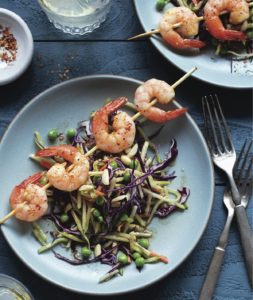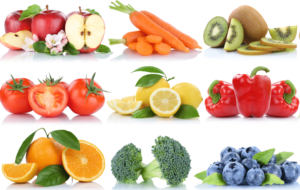Supplements/Ergogenic Aids
Magnesium Boosts Power of Vitamin D
Your clients may believe they’re getting ample vitamin D, but they won’t get the full benefit if their diet lacks magnesium. A study published in the Journal of the American Osteopathic Association found that vitamin D is not properly metabolized when magnesium levels are low. Thus, it remains largely inactive in the body, leaving people vulnerable to disorders related to poor vitamin D status, including weak bones.
Go Fish for Stronger Bones
A trip to the fishmonger can help your bones and your heart. Scientists have long noted a link between eating omega-3 fats in certain fish and improving heart function, but these mega-healthy fats are not a one-hit wonder. Critical Reviews in Food Science and Nutrition published a meta-analysis of previous research (which included 292,657 people)—and reported an inverse relationship between fish consumption and risk of hip fracture. Mechanisms still need to be sussed out, but in the meantime it’s a good idea to work fish into our diets at least twice per week.
Environmental Endocrine Disruptors Partly to Blame for Weight Regain in Women?
Maintaining weight loss is extraordinarily difficult for most people for myriad reasons, some understood and others less so.
In February, PLOS Medicine published results of the first randomized controlled human study looking for connections between weight loss and exposure to synthetic chemicals called perfluoroalkyl substances (PFAS). The researchers found that higher blood levels of PFAS don’t affect weight loss but are associated with greater weight regain, especially in women.
Question of the Month: McDonald’s Makes Kids’ Menus Healthier—Are They Healthy Enough?
A Happy Meals makeover is underway at McDonald’s. As of June, all Happy Meals in the U.S. will contain fewer than 600 calories. By 2022, they will have less than 650 milligrams of salt, and under 10% of calories will come from saturated fats and added sugars. Water is now the default beverage. Cheeseburgers are off the Happy Meal menu, while chicken nuggets and hamburgers are served with fruits, vegetables or a 110-calorie mini-side of fries.
Stuffed Portobello Burgers With Caramelized Onions
Fungi. Ewww. That’s true if it’s fuzz on your loaf of bread or mold in the corners of the gym shower. But mushrooms, redolent of the earth and presenting in a dizzying array of shapes, are fruiting bodies worth cozying up to.
Trending: Sparkling Water
Out with soda and in with . . . sparkling water. Health-conscious Americans looking for a carbonated-beverage fix are in luck as sparkling water takes over store shelves across the country. The sugar-free bubbling water is a great hydration source and is free of artificial sweeteners and other processed ingredients common in diet sodas.
Childhood Obesity Stats Remain Grim
A February study in the journal Pediatrics debunked reports that childhood obesity rates were leveling off or in decline. In fact, the study found that despite substantial efforts to curb the epidemic in recent years, obesity rates have increased for every demographic—especially preschool children and adolescent girls. Moreover, the study cited a substantial rise in severe obesity in children.
Cure For Peanut Allergies On the Horizon
Peanut allergies affect 2% of U.S. children and are the leading cause of death by food allergies. Unlike many of them, peanut allergies are rarely outgrown, and there are currently no treatments. People with peanut allergies must scrutinize everything they eat and keep a lifesaving epinephrine injection pen on hand in case of an accidental exposure.
What Are the Most Nutritious Eggs?
Question: What are the most nutritious eggs? There are so many kinds in the supermarket—brown, white, omega-3, free-range. Are there any differences?
Answer: Egg nutrients include protein, fat, vitamin A and choline. Eggs do have cholesterol, but cholesterol in food has little impact on cholesterol in your blood.
Do different eggs have different nutrition profiles? First of all, there is no nutritional difference between white and brown eggs. Different breeds of chickens simply lay eggs of different colors, from white to brown to green.
Cracking The Nutrition Code On Toddler Drinks
An April study looked at the marketing and promotion of toddler drinks—formulas, milk drinks and other beverages for children aged 9–36 months. The research, published in the journal Preventive Medicine, found that these drinks are heavily marketed to parents, poorly regulated, and nutritionally inferior to whole cow’s milk and a balanced diet. The drinks consist primarily of powdered milk, corn syrup solids or other added caloric sweeteners, plus vegetable oil. They also have more sodium and less protein than cow’s milk.
Summer Reading: Devoured
2016) is the book for you.
Sophie Egan, MPH, RD, food writer and program director at The Culinary Institute of America, takes readers on an eye-opening journey through the American food psyche, examining connections between our eating habits and the values that define our national character—work, freedom and progress. Egan explores why these values enable such an unstable and often unhealthy food culture while, paradoxically, making America’s cuisine really impressive.
Wansink Studies Discredited
Some of the most profound and useful study findings on the psychology and marketing of food and eating published over the past two decades may be invalid. The famed, and now shunned, Cornell researcher Brian Wansink and his Food and Brand Lab published hundreds of studies, many of which have not stood up to scientific scrutiny.
Experts Torn On Weight Watchers’ Free Teen Program
As part of an effort to rebuild its brand as a health-and-wellness company rather than a diet brand (and to gain new loyal customers), Weight Watchers® announced in February that it will start a free weight management program for teens this summer. Controversy erupted immediately among health professionals and the public.
USDA Retires SuperTracker
The U.S. Department of Agriculture will retire SuperTracker on June 30. SuperTracker is a free online nutrition, goal-tracking and food analysis tool, which more than 27 million people have used since its launch in 2011. The USDA says many other private nutrition tools are readily available and that it would like to spend its resources finding more efficient and modern ways to “help Americans find an eating style that is right for them.”
Hunger and Satiety Hormones High After Diet- and Exercise-Induced Weight Loss
Researchers are just beginning to understand why weight loss maintenance is so difficult. We know that at least part of the answer lies in metabolic changes that often accompany weight loss. For example, studies show that after diet-induced weight loss, the hunger hormone ghrelin increases, while satiety decreases amid declining levels of hormones such as peptide YY and glucagon-like peptide-1. After exercise-induced weight loss, hunger hormones also rise, but some studies suggest that satiety climbs as well.
Curried Shrimp Kebabs With Spring Slaw
This recipe by Michelle Babb, MS, RD, CD, author of Anti-inflammatory Eating for a Happy, Healthy Brain (Sasquatch Books 2016), is one of 75 in an evidence-based cookbook that aims to teach readers how to use diet to improve one’s state of mind with anti-inflammatory foods. Babb opens the book by explaining the science behind this eating plan and then provides the “how-to” with tasty concoctions ranging from simple to easy gourmet. Satisfy your taste buds, your microbiome and your mood with this dish, just right for ushering in spring.
Question of the Month
Despite government-funded health campaigns promoting healthier eating, Americans still eat shockingly low amounts of fruits and vegetables. According to a state-by-state survey by the Centers for Disease Control and Prevention, only 1 in 10 American adults meets federal fruit or vegetable recommendations—at least 1½–2 cups per day of fruit and 2–3 cups of vegetables.
Greens on Your Mind
Maybe smart people do eat more kale. A study published in the journal Neurology in December 2017 discovered that eating daily servings of leafy greens is associated with more youthful brains.
When at First You Don’t Succeed, Try Again . . . and Again
Persistence pays off when fostering a new generation of healthy eaters. A paper published by pediatric researchers from the University of Buffalo in the December 2017 edition of Obesity Reviews shows that repeatedly exposing infants and children to healthy foods, even when they snub their noses at them at first, is key to promoting healthy eating behaviors over the long term. This don’t-give-up attitude is particularly effective at getting little mouths to eat a greater variety of fruits and vegetables.
Alcohol May Boost Cancer Risks
Previous studies have associated light to moderate alcohol consumption with a lower risk for cardiovascular disease and maybe even diabetes, according to the Harvard T.H. Chan School of Public Health’s Nutrition Source, but teetotalers may have a leg up on avoiding cancer.


